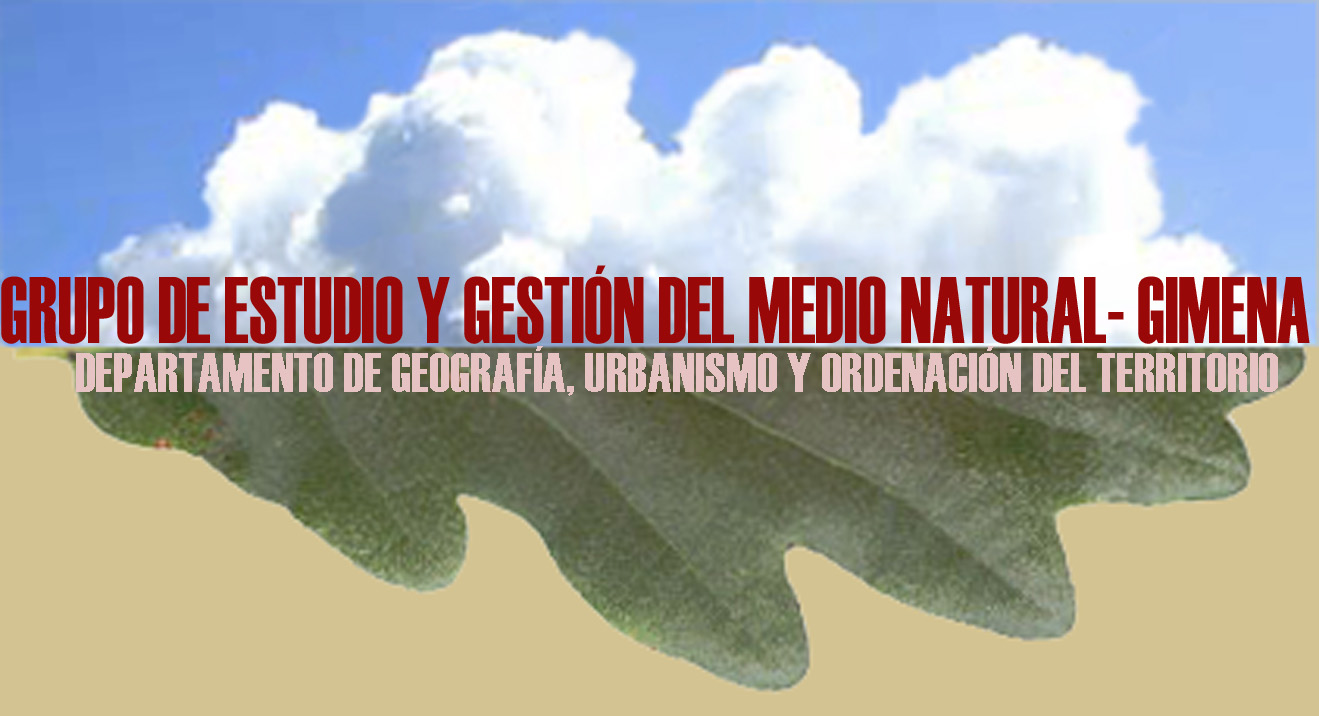
Research group
Department of Geography, Urban Studies and Land Planning- University of Cantabria (Spain)
MAIN PAGE
MEMBERS
RESEARCH
climatology
forest spaces, wildfires
natural risks
environmental change
management, landscape, heritage
NEWS
DOWNLOADS
CARRACEDO MARTIN,
V.; GARCIA CODRON, J.C. (2011). Consecuencias biogeográficas de las
infraestructuras hidroeléctricas del Río Nansa (Cantabria). Boletín de
la Asociación de Geógrafos Españoles, 57, p. 369 -389.
RESUMEN
El río Nansa es uno de
los más transformados de España por las infraestructuras destinadas a la
producción hidroeléctrica. Éstas han fragmentado el corredor fluvial y
alterado gravemente el régimen causando la desaparición de especies
valiosas en gran parte del río. Sin embargo estas mismas intervenciones
han resultado favorables a otros «valores naturales», como el bosque de
ribera, que son hoy objetivo prioritario para la conservación. En el
presente trabajo se analizan las consecuencias biogeográficas,
aparentemente contradictorias, de la transformación del Nansa y su
relación con la evolución de la morfología del lecho.
Se destacan la
extraordinaria recuperación del bosque de ribera, favorecida por el
estrechamiento del lecho y la desaparición de las grandes avenidas, y la
pérdida de continuidad del corredor fluvial que sufre una significativa
pérdida de calidad alrededor de cada embalse pero recupera valores
positivos a medida que aumenta la distancia a las presas.
PALABRAS CLAVE:
efectos de los embalses, corredor fluvial, bosque de ribera, Nansa,
Cantabria, salmón.
Consecuencias
biogeográficas de las infraestructuras hidroeléctricas del Río Nansa
(Cantabria). Disponible en
http://boletin.age-geografia.es/articulos/57/16-CONSECUENCIAS.pdf
CARRACEDO MARTIN,
V.; GARCIA CODRON, J.C. (2011).
Biogeographical effects of hydroelectric Infrastructures in the River
Nansa (Cantabria- Spain). Boletín de la Asociación de Geógrafos
Españoles, 57, p. 469 -476.
ABSTRACT
The Nansa is one of the most transformed rivers in Spain as a result of
the creation of hydroelectric power infrastructures. These have
fragmented the river corridor and seriously disrupted the system,
causing the disappearance of significant species in much of the River.
However, these same interventions have been favourable to other «natural
values» such as riparian forest, which are now a priority for
conservation. In this paper we analyze the apparently contradictory
biogeographical consequences of these changes and their relation to the
evolution of riverbed morphology. We highlight the remarkable recovery
of riparian forest, favoured by the narrowing of the channel, the
disappearance of the largest floods, and the discontinuity of the river
corridor, which undergoes a significant loss of quality around each
reservoir but regains it as the distance from the dams increases.
KEYWORDS:
effects of reservoirs, river corridor, riparian forest, Nansa,
Cantabria, Atlantic salmon.
Biogeographical effects of hydroelectric Infrastructures in the River
Nansa (Cantabria- Spain). Available from:
http://www.boletinage.com/articulos/57/32-CONSECUENCIAS.pdf
